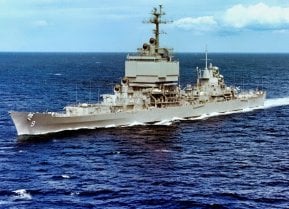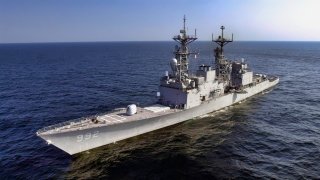Spruance-class Destroyers: Raw U.S. Navy Power No Nation Could Match
The Spruance-class destroyers, named after WWII Admiral Raymond Spruance, played a pivotal role in the U.S. Navy's fleet from the 1970s through the early 2000s.
Summary: The Spruance-class destroyers, named after WWII Admiral Raymond Spruance, played a pivotal role in the U.S. Navy's fleet from the 1970s through the early 2000s. Designed primarily for anti-submarine warfare, these ships were initially met with skepticism due to their seemingly modest armament compared to their Soviet counterparts. However, their quiet operation made them effective in their designated role. Despite their primary focus on anti-submarine tasks, the Spruance-class ships were versatile, later incorporating Tomahawk missiles to enhance their strike capabilities. This adaptability was showcased during Operation Desert Storm, where they played a significant role.
Spruance-Class Destroyers: The Silent Force Behind Naval Supremacy
Spruance-class ships were introduced as the U.S. Navy’s primary destroyer in the 1970s and 1980s. These ships, named in honor of World War II Navy Admiral Raymond Spruance, were designed to emphasize anti-submarine warfare. The ships featured a range of enhancements that would help the class remain in service for decades.
Spruance-Class History
While Spruance-class destroyers were solid warships, some members of Congress were skeptical of their potential early in the development phase. Soviet counterparts in the 1970s were heavily armed and looked formidable. The Spruance class looked less than imposing, with its two guns and its launchers for anti-submarine rockets and Sea Sparrow missiles. Indeed, its predecessors carried more visible armaments.
But advocates noted that the anti-submarine warfare role was better carried out by a quiet warship, and the Spruance class was eventually constructed.
How the Spruance Ships got their “DD” Designation
In the past, only gun destroyers were given the “DD” designation. Spruance-class ships were classified as DDs even though missiles were their primary armament. The Rim-7 Sea Sparrow ship-borne short-range anti-aircraft system was designed for defense against anti-ship missiles. The Harpoon anti-ship missile was developed by McDonnell Douglas (now Boeing). Able to fly above the water to evade defenses, this robust missile can be launched from air, sea, and land-based systems.
Originally, the DX program that resulted in the Spruance class aimed to award the construction of all 30 planned ships to a single shipyard. Litton-Ingalls shipyard in Pascagoula, Mississippi was awarded the contract in 1970, but budgetary and technical issues later delayed the trajectory of construction. The lead ship of the class, the Spruance, was commissioned in 1975.
Operational History
While initially designed to serve primarily as anti-submarine warfare ships, the Spruance-class destroyers were later upgraded to fulfill additional missions. Specifically, the installation of the Tomahawk missile system made them effective at strike warfare, and after these missiles were incorporated, the Spruance class' missions evolved.
As detailed by the U.S. Naval Institute, Spruance destroyers launched 112 of the 288 Tomahawks fitted during Operation Desert Storm:
“The Gulf War underscored the flexibility of the Spruance class. During the war several Spruances embarked a small U.S. Army helicopter detachment, to man two OH-58D light-attack night helicopters. These small attack helicopters were used to help recapture Kuwaiti islands held by Iraqi forces. The embarked U.S. Navy SH-60B helicopter used its surface-search radar to vector the Army helicopters to and from their targets. This mission was given to the Spruances along with the FFGs because of their LAMPS Mk III capabilities, and also because the Aegis ships were too busy coordinating the joint air picture.”
If the Spruance-class ships had been maintained and properly upgraded, they could have remained in service up until 2019. But the Navy had other priorities, and the last Spruance-class destroyer, the USS Cushing, was decommissioned in 2005.
About the Author: Maya Carlin
Maya Carlin, National Security Writer with The National Interest, is an analyst with the Center for Security Policy and a former Anna Sobol Levy Fellow at IDC Herzliya in Israel. She has by-lines in many publications, including The National Interest, Jerusalem Post, and Times of Israel. You can follow her on Twitter: @MayaCarlin. Email the author: [email protected].


